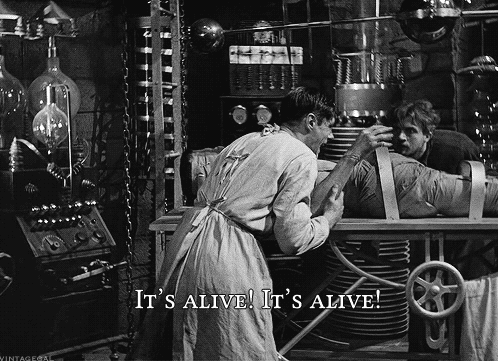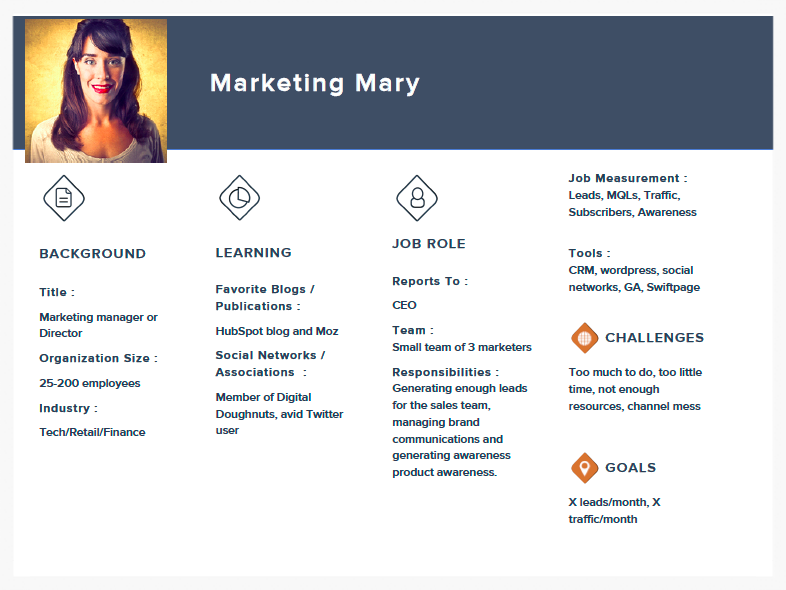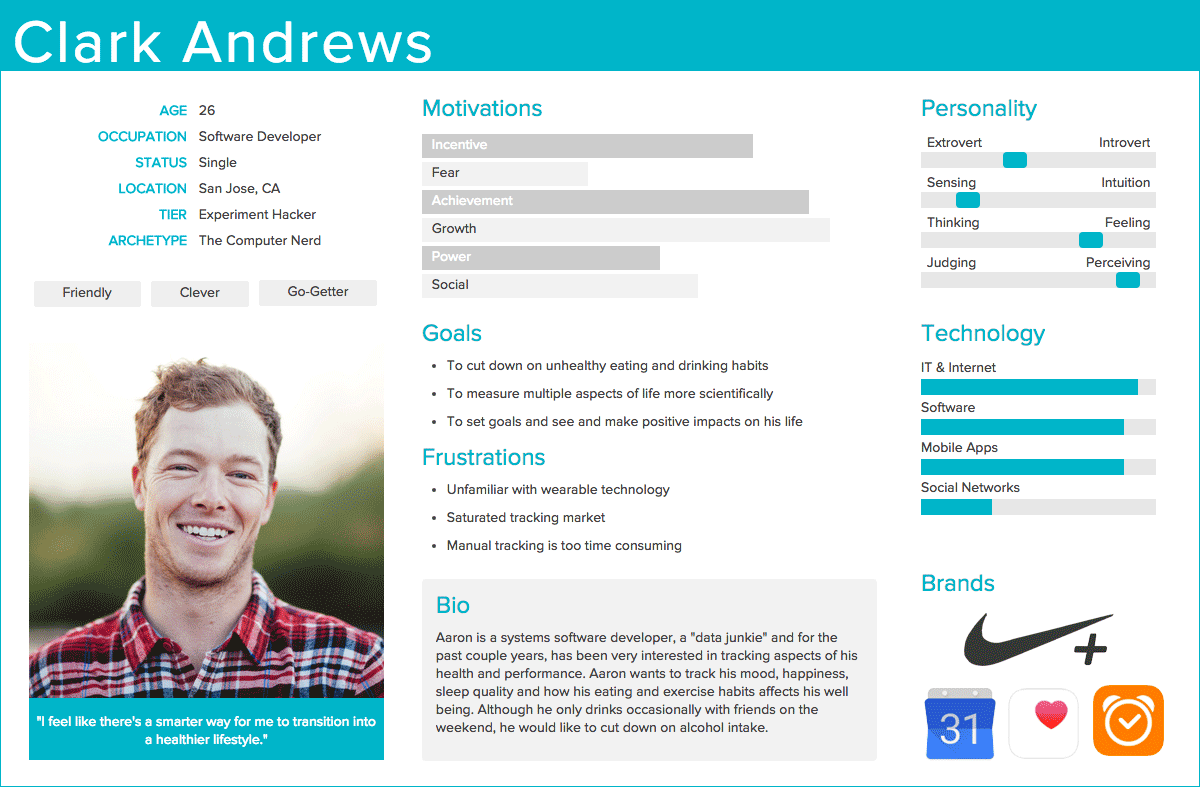
Buyer personas transform the hard facts about your target audience into ‘living’ people who can help inform important decisions about marketing, advertising, content creation, product or service development, customer support, public relations, pricing, and sales. Here’s how to create buyers personas that will bring your business to life.
Regardless of what kind of industry you’re in, you know you need to connect with your target audience. You need to discover the wants, the needs, the challenges, and the dreams of the people you want to sell to; the people whose problems you can solve. To do that, you have to drill down to understand who they are on an individual level, and not regard them like the Borg or some massive, faceless marketing monolith.

That’s where buyer personas come in.
Buyer personas (also known as customer profiles, customer personas, audience profiles, and marketing personas) are basically character sketches of your ideal customer. Creating a general depiction of your customer as if they are someone you know personally can help inform important decisions about marketing, advertising, content creation, product or service development, customer support, public relations, pricing, and sales.
Why you need buyer personas
Let’s say you have a product or a service that you believe caters to moms. Great, but here’s the thing: ‘moms’ are a pretty huge group.
There are married stay-at-home moms, married moms who work outside the home, single moms who stay at home, single moms who work outside the home, rich moms, lower income moms, middle class moms, moms who only have one child, moms who have many children, moms who are looking after both children and aging parents. There are moms who are recovering from giving birth and moms who have adopted.
There are moms who value convenience over sustainability (like disposable vs cloth diapers), moms who like brand names, moms who are price conscious.
There are moms who live in cities and moms who live in rural areas; moms who have nannies, moms who use daycare; moms who are young, and moms who are older.
There are moms with babies, toddlers, preschoolers, school kids, teenagers, or college students. Some moms might be new to your city or country, and some moms may not speak English as their first language. You get the picture.
So while there would be some traits that moms share generally, their individual wants, needs, challenges, and dreams are too specific to lump them all together.
For example, if you had a product designed for moms of newborns, you would be missing the mark, and wasting money, if you advertised to a mom who had a teenager. Yes, they’re both moms, but what they value and need from you right now is going to be very different. One might be worrying about how she and her baby can get more sleep, while the other is trying to drag her kids out of bed in the morning.
Having a detailed buyer persona for ‘Emily,’ the exhausted mom with a newborn who isn’t sleeping, will help you tailor your messaging and target your advertising directly to all the Emilys, as opposed to ‘Catherine,’ the frustrated mom of teenagers who won’t get out of bed in the morning in time to eat a healthy breakfast before school.
Product and service development
Buyer personas can also help shape the development of new products and services. By thinking about what Emily, the new mom might need and what her challenges are, you can make informed decisions about what you can do to meet those needs.
It can be easy to come up with a new idea to improve a product that seems really cool, like, “Oh, we’ll add this adorable little owl design to our product. Moms love adorable owls!” But are owls really useful to Emily in her quest to get her baby to sleep?
Instead, your buyer persona of Emily may reveal that one of her fears as a new mom is that she doesn’t know what she’s doing. It’s a common concern among new parents. Emily may be better equipped to handle the stress of her baby not sleeping if she was less worried that it was her fault, and that she, as a mother, was doing something wrong.
So what could you add to your core product that not only might help Emily’s baby sleep through the night, but also give Emily more confidence and support about being a new mother? Not owls, that’s for sure (although Emily probably agrees owls are adorable, as do I).
Taking a step back and referring to the characteristics of your buyer personas can be that sober second thought of whether this new feature is actually valuable to your target audience and worth pursuing.
Content creation
Content creation is challenging; I feel your pain. But a buyer persona can make it easier by giving you a set of guidelines for blog posts, lead magnets, videos, ad messaging, and more.
What might Catherine, frustrated mom of teenagers who won’t get out of bed in the morning in time to eat a healthy breakfast before school, be looking to read?
Recipes for quick, healthy, teenager-approved breakfast foods they can eat on their way to school. Or maybe research-based articles about why teenagers sleep so much and what to do about it. Or tips on how to stay calm and not lose your cool when your teenagers are driving you crazy.
Target your target
In this era of incessant advertising noise, you need to find a way to break through the clutter to lasso the attention of your customers. You need to be laser-focused if you want to reach your audience.

Fortunately, innovation in digital marketing has made it possible to micro target your buyers. Platforms like Facebook, LinkedIn, Twitter, and Instagram all have advertising tools that let you drill down to the personal particulars of your target audience like age, location, job title, industry, interests, hobbies, education level, relationship status, language, and more.
Armed with a detailed buyer persona and one of these powerful targeting tools, your chances of hitting the bull’s eye of your customer’s attention improves exponentially.
How to create a buyer persona
You can collect the information you need to create your buyer personas from many different sources; research, personal interviews, and surveys of your target audience. You can use prospects, existing customers, or related stakeholders outside your company who have a specialized knowledge of your industry.
The number of buyer personas you need depends on your particular business. Do you have different products or services aimed at different kinds of customers, like the Emilys vs the Catherines? Are some of your buyers direct consumers and others wholesalers? Or maybe you have pricing tiers, so you want to create personas that match the ideal buyer for each level.
If you have customer groups with challenges and goals that are distinct from each other, you want to create a buyer persona to represent each of them.
Start with your customers
A great place to start is to look at the behaviour of your most valuable customers. Obviously, those are who you want more of, and they already have experience interacting with your product or service.
Pick a few customers and reach out to them to see if they would agree to be personally interviewed. In our experience, we’ve found most people are open to interviews as long as we make clear how long it will take (try to keep it under 30 minutes), that we’ll never disclose any sensitive business information, and that we aren’t trying to sell them anything.
You can also use a tool like Survey Monkey to get similar results.
It’s a good idea to throw in a little incentive to sweeten the deal, maybe an Amazon or Starbucks gift card or some company swag, like t-shirts.
It's important to remember that you’re not just trying to get information about how much people like your company. You’re trying to find out more about who they are as individuals, what their challenges are, what they value, and what deters them so you can pick up on general patterns of attitude and behaviour.
Questions to ask customers when developing buyer personas
What you ask really depends on your specific industry or business, so you need to customize your list of questions. It should cover both demographics like age, location income, and education level, and psychographic information like personal interests, buying motivations, and attitudes. Think of demographics as the who, and psychographics as the why.
Generally, this is a guideline of the kinds of things you want to ask to get the information you need:
-
What’s your role at work and title?
-
What are your main responsibilities?
-
How is your performance evaluated?
-
What do you do during the run of a day at work?
-
What kind of skills or qualifications do you need for your job?
-
Are there any specific tools or products you use to do your job?
-
Who are you accountable to? Are there people accountable to you?
-
What industry are you in?
-
What are the major challenges your industry faces right now?
-
What are the major challenges your company faces?
-
What are the major challenges that you face in your specific job?
-
How many employees does your company have?
-
What’s your company’s revenue? (This may be a touchy one so try to ask this within a general range, so they don’t feel that they have to be too specific.)
-
What would you like to achieve at your job?
-
What would you like to achieve in your career?
-
Which blogs or other publications do you read?
-
Are there particular public personalities you follow related to your career and industry (like a Gary Vaynerchuk or Seth Godin, for example)?
-
What professional associations do you belong to?
-
Age, marital status, gender, children, languages? (Again this is an area you may need to be sensitive to giving people a range helps.)
-
What’s your educational background?
-
Where do you live?
-
What do you like to do when you’re not at work? Hobbies, interests.
-
What is the most important thing you’re looking for when it comes to purchasing (insert your product or service category here)?
-
What’s the biggest challenge to purchasing (insert your product or service category here)?
-
What would make you say no to purchasing (insert your product or service category here)?
-
What do you think is the biggest thing missing from (insert your product category or service)?
Talk to sales, account services, and customer support
The people on your sales, account services, and customer support teams probably have the most direct and personal interactions with your leads and clients. Get their feedback on what things they hear and observe most often, including any objections or challenges.
It’s not helpful to only get the good stuff. It’s just as valuable to know the negative things; what’s holding someone back from buying your product or service, or what they’re looking for that you don’t offer.
Add fields to your forms
Use any web forms on your site to gather information about your leads and customers. Don’t overwhelm them by grilling them right off the bat, but adding a couple of questions about company size or business challenges can give you some immediate insight. Again, the specific questions you ask depends on your business and industry.
Bringing your buyer persona to life
The whole point of a buyer persona is to take all the dry facts, figures, and research about your target audience and use it to create a living, breathing human. Or at least a reasonable facsimile of one that exists on paper.

By looking at patterns that emerged through your research and interviews, you can now use those insights to plug into your persona. You can make them as detailed as you like for whatever information will be useful to your and your team. These are the general categories I use to create buyer personas:
Name:
Pick a name that represents the generation and gender of this persona.
Age: This can be a range.
Job title
Job Description
Goals
Challenges
Buying motivation
Values
Fears/objections
Favourite channels of communication
Short bio
Repeat this process for each of the buyer personas you need to develop.
You can then use a free online persona generator like Xtensio.com or Hubspot’s makemypersona.com and punch in all your details to get a nicely designed persona. Or have your in-house designer create your own.

Example of a buyer persona using makemypersona.com

Example of a buyer persona using Xtensio.com’s template.
Be BFF’s with your buyer personas
Once you’ve created your buyer persona team, share it with everyone on your team. As discussed earlier, buyer personas can be helpful to almost every aspect of your business, so it’s important everyone is familiar with your profiles and refers to them as they develop their own policies, campaigns, products, and messaging.
You should also be aware that just like real people, your personas are going to evolve and even change over time depending on how their industry changes, how their customers change, how your business grows, how your industry changes, and how your products and services develop.
So you need to keep your eye on your personas to make sure they’re still accurate, update them as needed, and maybe even add new personas as your customer base grows.

Director of Communications @proposify. Channeling Maria Von Trapp, Queen Elizabeth II, and my taxi-driving, yard-sale-obsessed grandmother. Professional word nerd and unapologetic disciple of the Oxford comma. Connect on LinkedIn


